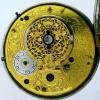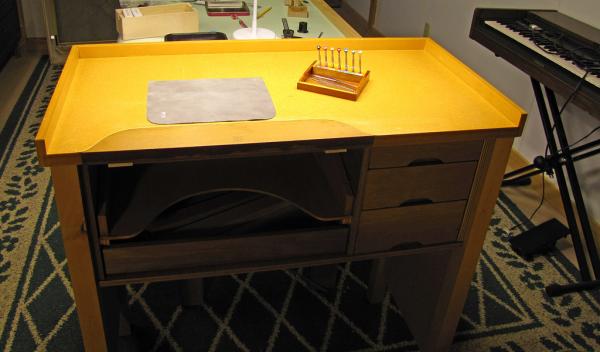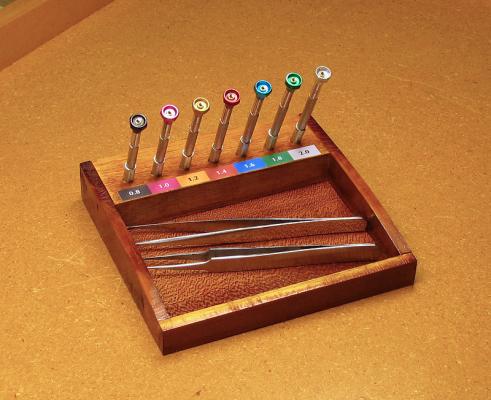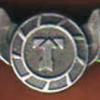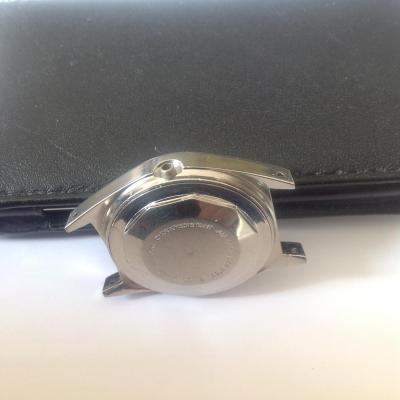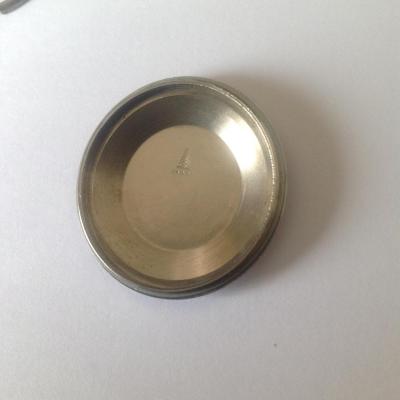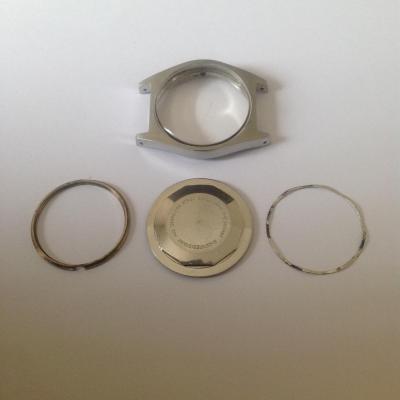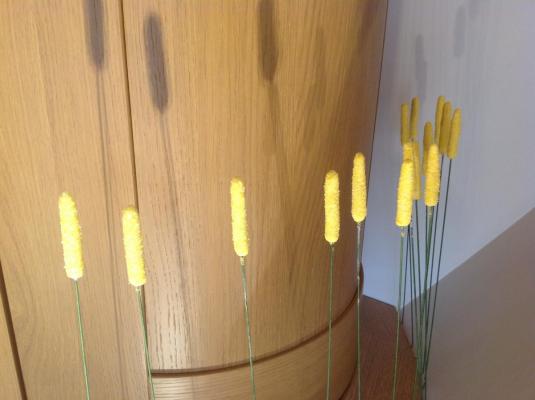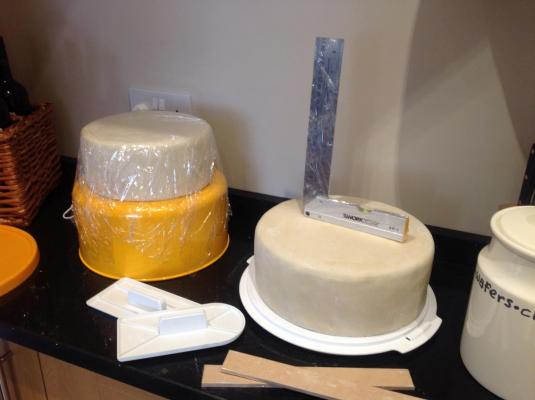Leaderboard
Popular Content
Showing content with the highest reputation on 04/25/15 in Posts
-
An update on my bench ... I made an insert for the cut-out, which slides into the tool mounting holes, and exactly fills the cut-out space. I will probably just used screws to hold it in place, rather than gluing it in permanently. Once I put the drafting table liner on the bench, it will cover the insert. I also made myself a handy little screwdriver holder / tool tray, rather than just have the screwdrivers loose on the bench when using them: I've come to the conclusion that there's no standard for the colour codes, as I've seen several different sets on-line each with a different colour-to-size correspondence.3 points
-
I own copies of The Life and Death of Colonel Blimp and Great Expectations. Reminds me that I particularly enjoyed Bernard Miles as Joe Gargery. There was a sort of golden era of English film making after the war and into the 50s. My wife is always amazed at how many movies I've seen. But heck, I grew up not too far from Hollywood. We live in a "quad state" area. We live in West Virginia. Go to our gym in Virginia. Church is in Maryland. Car repairs in Pennsylvania. Had a very cold winter the last two years. It's not an exciting place but we've both seen the world (more than once) and we just want to settle into old age. It's very nice to be watchmaking while the snow falls outside.2 points
-
That Vic, is one of the nicest looking cakes I have ever seen. B) An Omega for your 65th! As an Omega lover, I would suggest a Constellation with 561 movement. :) Whatever you decide on do a lot of research to make sure it is AOK as there are a lot of redials and franken about. If I can help at all don't hesitate to give me a shout.2 points
-
Hi all, I'm a watch noob but sometimes I read something on watches, I bought a timegrapher because I like having my watches working at their best. I bought the Weishi NO. 1000 Timegrapher, a cheap one (250€ with shipping) but very functional. The Weishi NO.1000 has all the main features you may want: 1) possibility to adjust the sensibility of the microphone 2) possibility to set the lift angle 3) it shows the beat rate 4) it shows the amplitude 5) it shows the beat error 6) it keeps track of four average beat rate during the measurement (this feature is available in new software version only) Let's see how it looks: and here a photo of all the tool I used to regulate my watch without any scratch. As you can see in the photo below I have used: 1) watch case opener, I prefer the 2pins one over the three pins Jaxa, very easyer to use and IMHO very easier to not scratch the case with 2pins. 2) a simple loop, a 3x one 3) a watch case holder, it is mandatory to open the case without scratching it 4) a little screwdriver (0.9mm) 5) silicon grease for lubricating gaskets 6) the timegrapher 7) a little of patience Here the watch case holder in action: And here the watches I calibrated. Seiko Black Monster SRP307J1 with a Seiko 4R36A caliber And a classy Seiko SARB033 with a 6R15C caliber. Both calibers are similar sharing some components and some features. They beat at 21600bph, the lift angle is 53° on both calibers, they both hack and handwind, same automatic winding mechanism. The acceptable daily rate for the 4R36 is: -35/+45 seconds a day, +/- 30 seconds day isochronism fault, +/- 30 maximum positional variation, 40 hours power reserve (SPRON110 mainspring). The acceptable daily rate for the 6R15 is: -15/+25 seconds a day, +/- 10 seconds day isochronism fault, +/- 15 maximum positional variation, 50 hours power reserve (SPRON510 mainspring). Thanks to the 6R15 the SARB is less prone to positional variation and less prone to isochronism fault. The difference in performance once calibrated and when calibrating is big. The better mainspring and the better hairspring does a good job here. Let's start calibrating the Seiko Monster. Here what I have done in the correct order (I post an image just to show you the parts where I worked on): 1) I rotated the regulator pin counterclockwise in order to FIX the mainspring inside the regulator pin 2) I adjusted the beat error by moving the stud support, checking the timegrapher on every move, I tried to get 0.0ms beat error at least in one position 3) I adjusted the beat rate by moving the regulator, always checking the timegrapher on every move, I adjusted the rate by taking an average of the six positions. My job consists on working at the PC so my watch daily position is quite always the same. This are the Monster's results before calibration with a daily rate that varies between +9 to +14 seconds (this watch was regulated before by a professional watchmaker) and this are the results after the calibration: now the daily rate varies between -3 to +2 seconds a day, I don't need to reset the watch often ;) Now let's calibrate the Seiko SARB033 doing the same things: This are the Spirit's results before calibration with a daily rate that varies between +9 to +14 seconds (the watch is new and never calibrated before that doesn't done an excellent job) and this are the results after the calibration: now the daily rate varies between 0 to +1 seconds a day. The 6R15 on the SARB is really easier to calibrate and the beat rate is really more consistent than the 4R36 in the monster. The 6R15 beat rate is really constant when the watch is laying in the same position, the beat rate of the 4R36 fluctuates a lot more. This is the proof on how consistent is the rate of the SARB, no fluctuations at all. The Monster rate fluctuates a bit also when the watch is laying in the same position. That's all ;)1 point
-
Hi Stephen, I'm only going by the part that Cousins references. If you go onto "watch parts" "watch parts branded" "AS" Then look up 1950 in the calibre box and select "all parts" in the Swiss part description box, then click "search for items", it lists everything that they have or can easily get for that movement. Then scroll down to the Incabloc entry and it gives the reference number. Cousins are a pretty good reference for this sort of information even if you don't end up buying from them (although they do have a price match policy). Hope this helps, Marc.1 point
-
Bob,UK, which is why I mentioned Cousins. If I was in U.S. I would probably try some of those packs of 5 for spare parts. Thanks! Hi clockboyI think that chart is just for KIF. Could be useful in future though thanks. MarcThat's really helpful thanks. I'm in no rush so I think I'll just wait. Can you tell me how you know this is the correct one? Thanks Stephen1 point
-
I have now posted 'Harwood First Automatic Wristwatch Assembly Walkthrough' in the 'Watch Servicing and Walkthroughs' section of the forum.1 point
-
Welcome to the forum Douglas. My favourite is An Inspector Calls - his screen presence is unbelievable.1 point
-
Hello Douglas, Few interest's are as absorbing as the world of watches, as they say "Practice makes perfect", of course this only holds true provided you are practising the right method. Regarding the hand shaking, one of the tips I learnt from "Practical watch repairing by Donald De Carle", which I believe is available for free as a PDF file on the net, is to keep a finger of the hand holding the screwdriver in contact with the movement, this way we all shake together. I cannot recommend "Practical watch repairing" too highly, it is full of practical information. Good luck with your endeavours.1 point
-
Welcome Douglas, This is a great forum for tinkerers and beginners because there always seems someone who can help. Once you start with horology it's difficult to let it go. Enjoy.1 point
-
I think I was wanting to remove the top cap jewel to try a tiny bit of synthetic clock oil I have, I think the doing ran down, the click is so tiny I don't even want to touch in. I just fee like my tools are over sized for this work. And still I want to enjoy a running watch from 18801 point
-
Hi Douglas.. Is this stainless steel? you can use fine grade sand paper followed with a metal polish like Autosol. Stay away from the edges of the case so that they dont lose their sharpness as this will decrease the value of the watch. Snap on caseback.. instead of twisting the tool, you need to force the edge of the tool into the gap..think of it as a wedge. Also consider this... if you do manage to get the caseback off..bear in mind getting it back on will be similarly challenging unless you have the proper tools... with the possibility of breaking the crystal high ! Anil1 point
-
Hello Douglas and welcome, This is a great place with good advice and helpful people and you will be at home here. Now if I could only stop humming country Roads Talking about humming, I love the Accutrons and have Three at the minute. The phasing is quite trying but worth it to get that Hum. Cheers, Vic1 point
-
1 point
-
Most of the parts were rubbish and went into the bin but I did retrieve quite a few old lenses that are recoverable with a bit of effort and polywatch so they will go in my spares collection. However there was one case that seems to be worthy of a bit attention, nothing fantastic but I wonder if any of you guys recognise the case and I may get a movement for it as it is SSteel and not in bad nick. it is 33mm side to side with 18 mm lugs and inside the back there is something a bit like a tree with ADB under which may just refer to s. steel. Here are some pics. Finally The wedding went off perfectly well outside in 68 degrees and me with a taily coat and waistcoat on - lathered. The cake - well not bad for an old farty tinkerer Cheers, Vic1 point
-
Respect to you Affnan - a good job! That movement is a very good one - typical Longines, beautifully made and finished - and well worth looking after.1 point
-
1 point
-
Affnan, I can only echo all the others have said. You bought a watch with a major problem, diagnosed the problem, sourced the part, then repaired and serviced it. Not only that, you took the time to take excellent photographs and document your progress. For your first job as an amateur commend you, as this can only encourage others. I look forward to reading more posts from you in the future. :)1 point
-
Hi Douglas, Welcome to the forum! That's a nice -- and interesting -- Accutron! I'm sure you'll find a wealth of knowledge here and hope you'll enjoy the relaxed and friendly atmosphere of the forum. I, too, have been "self taught" if online classes can be counted: which leads me to one question: Are the AWCC classes you refer to, available on line? In any case, enjoy our forum and share your experiences. We definitely are looking forward to that...and please, don't hesitate to ask questions, we always have someone that "has been there and done that", ready to help! Cheers, Bob1 point
-
Just finished the marzipan and the boss is still out so I thought I would post my efforts. I would never manage a bake off as I am just too slow. The first is the centres of the Cala lilies drying out, the pollen effect is from corn meal stuck on with edible glue. The second is the two cakes nice and flat and level so the china topper does not fall off hopefully. Once Marzipan dries out that is the base for the Fondant Icing and then decorations go on. Right time for a coors light (on a diet until I get to Dublin (:-)) Cheers, Vic1 point
-
1 point
-
I found this wonderful site whilst preparing for my "7750 Service Walkthrough", and I wanted to share it with everyone: The Alliance Horlogère Project. In particular the information on lubricants: there names, and functions, in real layman's terms ... I like that! Here's the link to Modern Watchmaking Lubricants I hope you find it as informative as I did :)1 point
-
Wether watch repair is your hobby, or you wish to train as a watch repairer, you will need to buy some tools at some stage. These are the 10 most useful tools you will need in your kit.There is the right tool for every job in all trades and this is especially true for watch repairing. No matter how many tools you have, there always seems to be something needed. I know many watch repairers, some with many, many years behind their belts, who truly enjoy sifting through a catalog of tools in order to see what would make their lives easier. Indeed, I have almost 25 years in the trade, and I have so many tools. But occasionally I enjoy the purchase of that new tool which will make my life easier. And there is no better feeling than buying the best quality and knowing that you are using the best. That being said, there are several tools which are very important to have on day one of your watch repairing career. And even if you are an enthusiast and watch repairing is your hobby, you should consider these 10 tools at a minimum to be in your tool box. 1. TWEEZERS OK, so tweezers are of paramount importance. A good, well maintained pair of tweezers are needed. But you really should consider having several sizes for different jobs. · Size 2 This will be for picking up heavier pieces. These are useful for handling train bridges and base plates. And as general use when working on pocket watches. · Size 3 These are finer than size two and are useful for general purpose when working on wrist watches. · Size 5 This size will have extremely fine tips and are most useful when working on watch escapements and manipulating hairsprings. · Size AM.BR These are quite heavy tweezers made of brass. These are useful when working on high grade watches where you do not wish to risk scratching any of the watch plate surfaces. Other sizes are available but you really should consider the above at a minimum. There are many choices even after you have chosen which sizes to purchase. You can get carbon steel, stainless steel and anti-magnetic. There are also brands such as Bergeon, Horotec and Dumont. Many professional watch repairers tend to use Dumont as they have a fantastic range to choose from. In particular I can recommend the Dumostar range. These are anti-magnetic but also quite hard wearing. If you bend or damage the tips on your screwdrivers then you can re-shape them using a sharpening stone. If they get too worn then they are still useful for rough work like lifting spring bars when fitting straps etc. 2. SCREWDRIVERS A decent set of screwdrivers is, naturally, a must. There are many manufacturers and qualities to choose from, but it is not recommended to use the cheap variety sold on eBay or at your local market as these will usually have very soft tips and could likely slip and cause damage to the watch you are working on. Popular brands include A&F, Bergeon and Horotec. A&F manufacture a great set of screwdrivers for a reasonable price, and these are an excellent choice for getting started. Many watch repairers may debate over which is best between Bergeon and Horotec. I prefer Bergeon with the ergonomic heads. Other watch repairers I know swear by the Horotec's. Everybody I know seem to agree that the Bergeon fully ergonomic screwdrivers are terrible (the ones with the rubber shaft). 3. HAND LIFTING TOOLS Essential for removing the hands from a watch. There are two kinds · Standard hand lifters These come in pairs and are metal rods with a tapered flat edge at the tips which is curved into a blade and will have a 'v' cut in the blade centre. These come in several sizes which would be useful for small watches up to small clocks. · Presto hand lifters This is a single tool which has a spring loaded lifting mechanism. It is useful to have both kinds. My preference is the standard hand lifters. 4. CASE OPENING TOOLS A case knife is essential for opening a watch case with a snap-on back. It is advisable to keep the blade both sharp and well maintained to reduce the risk of damage to yourself or the watch case. A Jaxa tool is used for opening a watch case with a screw on back. It will come with several tips for different types of watch back. There are a couple of sizes, a standard size and a large size. You can buy the original Jaxa or a cheaper replica. You should use the opener with the watch case mounted in a case vice (preferably further secured in a bench vice). 5. CASE VICE When opening a screw-down watch back, you should consider using a case vice which will help to minimise damage to the case and potential injury to your hand. It is even better to secure the case vice in a bench vice. 6. BLOWER When working on your watch, you should NEVER blow on the movement or any parts with your mouth. This will likely cause corrosion. You should use an air blower instead. There are a couple of types - a bellows style and a pump style. The bellows style is a bit more aggressive and the pump style is more gentle. 7. MOVEMENT HOLDERS When the watch is out of the case, you will want to minimise touching the watch with your fingers. You will also not want to put pressure on the watch when undoing screws and you could break parts. So using movement holders is very advisable. There are regular universal movement holders in various sizes and shapes. and you will find movement holders for specific movement calibres like the Valjoux 7750 or ETA 2892-A2 for example. 8. EYE GLASSES (LOUPES) You should invest in eye glasses with quality optics. An eye glass is usually worn in your eye like a monocle. You will find these manufactured by A&F, Bergeon and Horotec. At a minimum you should have a low magnification (x4) and a high magnification (x10) for close inspection work. This is very important when fault finding. You can get a clip for your spectacles and there is also a head band available for people who cannot get used to wearing an eye glass which can be quite tricky at first. 9. OIL POTS Oil pots are inexpensive and a must in order to aid you in getting the correct amount of oil on your oilers. There are cheap and very expensive oil pots and to be fair it does not really matter which ones you opt for as long as they serve the purpose of keeping dust off your precious oil. 10. OILERS These are fine, specially shaped needles with handles. They are used for transferring small amounts of lubricant from your oil pot to the desired location. And so this, by no means, is an exhaustive list of all the tools you need to repair watches. In fact, these are the most basic of requirements. I have not mentioned pliers, pin vices, broaches, reamers, files, cutters and measuring equipment. But I will follow up this article with a further list of tools you will need as you expand your tool kit.1 point

